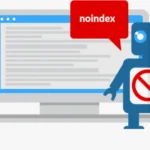What Is Cloaking, Its Types, and How Does It Impact SEO?

What Is Cloaking in SEO?
At its core, cloaking is the practice of showing one version of a webpage’s content to search engine crawlers (like Googlebot) and a completely different version to human visitors. Think of it as a digital disguise. The website serves different content based on whether the request is coming from a search engine bot or a real person using a browser. Why would anyone do this? The main goal is usually to manipulate search engine rankings. By showing bots keyword-rich, highly optimized content that might not be user-friendly or even relevant, site owners hope to trick the search engine into ranking their page higher for those keywords.
Meanwhile, human visitors see something else – perhaps a page with less text, more ads, or even completely unrelated content. This is a direct violation of search engine guidelines, particularly Google’s Webmaster Guidelines. Google’s mission is to provide users with the most relevant and high-quality results. When a website uses cloaking, it’s being dishonest about the content it’s offering, which degrades the search experience for users.
Why Anyone Risk Using Cloaking?
Some common reasons include:
Manipulating Rankings: The primary goal is often to trick search engines into ranking a page higher for specific keywords by showing them a keyword-stuffed version hidden from users.
Faster Traffic (or So They Think): Some believe cloaking is a shortcut to bypass the effort of legitimate SEO and get traffic quickly.
Hiding Affiliate Links or Spam: Cloaking can be used to show search engines legitimate-looking content while directing users to pages filled with aggressive advertising, spam, or low-quality affiliate links.
Serving Malicious Content: In worst-case scenarios it might show benign content to Google while serving malware or phishing scams to users.
While the intent might seem strategic to the website owner (I’ll just show Google what it wants to see!), it’s ultimately an unethical tactic built on deception.

Types of Cloaking
Cloaking isn’t a single technique; it’s an umbrella term for several methods used to serve different content. Understanding these helps recognise potential issues. Here are the common types of cloaking:
1. IP-Based Cloaking
Think of an IP address as a digital postal code for an internet connection. IP-based cloaking involves identifying the IP address of the visitor. Search engine crawlers (like Googlebot) often crawl from known IP ranges. The server detects if a request comes from one of these known crawler IPs and serves the “optimized” (often keyword-stuffed) version. Human visitors, coming from different IP addresses, see the “real” (or intended user-facing) content. This is risky because Google actively crawls from various IPs, making detection likely.
2. User-Agent Cloaking
Every time your browser (like Chrome, Firefox) or a search engine bot visits a website, it sends a “User-Agent” string identifying itself. User-agent cloaking checks this identifier. If the user agent matches a known search engine bot (e.g., “Googlebot”), the cloaked content is served. If it identifies a regular browser, the user version is shown. This is one of the most classic forms of cloaking.
3. JavaScript Cloaking
Some websites rely heavily on JavaScript to display content. With JavaScript cloaking, the website might serve basic HTML with keyword-rich text (or hidden text) that search engines can easily read. However, for human users with JavaScript-enabled browsers, the script runs and replaces that initial content with something entirely different (e.g., images, videos, or less text-heavy content). Since Googlebot is getting much better at rendering JavaScript, this method is becoming less effective and easier to detect.
4. HTTP_REFERER Cloaking
The HTTP_REFERER header tells a website where a visitor came from – for example, a Google search results page, another website, or a direct visit. HTTP_REFERER cloaking checks this information. A site might show spammy or aggressively monetised content only to visitors arriving directly from a search engine results page, while showing different, perhaps more legitimate, content to visitors coming from other sources.
5. Hidden Text/Content Cloaking
This is a cruder form of cloaking, often overlapping with other techniques. It involves making text or links invisible (or nearly invisible) to human users but readable by search engine crawlers. Common tactics include:
- Using white text on a white background.
- Positioning text off-screen using CSS.
- Setting the font size to zero.
- Hiding links within tiny characters like a comma or period.
6. Flash or Image-Based Cloaking (Less Common Now)
Historically, some sites embedded keyword-rich text within Flash files or complex images while showing different visual content to users. Since search engines struggled to “read” inside Flash or complex images effectively back then, this worked for a while. However, with Flash being obsolete and image recognition technology improving, this cloaking technique is largely outdated and ineffective.

How Cloaking Impacts SEO
Using cloaking might seem like a quick way to game the system and shoot up in the search engine results pages (SERPs), but the reality is far from it. Search engines, especially Google, have become incredibly sophisticated at detecting these deceptive practices.
The consequences of being caught cloaking are severe and can have a devastating long-term impact on your website’s performance and even its existence in search results:
Penalties, Penalties, Penalties: This is the most immediate and significant impact. When a search engine detects cloaking, your site is highly likely to receive a Google penalty. These penalties can be manual (imposed by a human reviewer at Google) or algorithmic (detected by Google’s automated systems). Penalties can range from a significant drop in your rankings for specific keywords or pages to a complete de-indexing of your entire website. Being de-indexed means your site is removed entirely from the Google search index, effectively making it invisible to anyone searching on Google.
Loss of Organic Traffic: With lower rankings or complete de-indexing, your website will experience a drastic drop in organic traffic. This is valuable traffic that comes from users clicking on your site in search results. Losing this traffic can cripple a business that relies on search visibility.
Damaged Reputation and Trust: Cloaking is fundamentally dishonest. If users land on your site expecting one thing based on the search result and see something completely different, they will feel misled. This leads to a poor user experience, increases bounce rates, and damages your brand’s credibility. Users are less likely to trust your site in the future.
Wasted SEO Efforts: Any legitimate SEO strategies and efforts you’ve put into your website, like creating quality content, building backlinks, and improving technical SEO, become largely ineffective if your site is penalized for cloaking.
Difficulty Recovering: Recovering from a cloaking penalty can be a long and challenging process. It requires identifying and removing all instances of cloaking, submitting a reconsideration request to Google (for manual penalties), and demonstrating a commitment to ethical SEO practices going forward. There’s no guarantee of a quick recovery.
Why Do Search Engines Hate Cloaking?
The strict enforcement against cloaking by search engines is driven by their core mission to prioritize and provide a superior search experience for their user base.
User Experience: Cloaking directly harms user experience by presenting misleading information in the search results. Users trust search engines to deliver relevant content, and cloaking breaks that trust.
Fairness and Integrity: Cloaking gives an unfair advantage to websites that are willing to deceive. It undermines the efforts of websites that focus on creating genuine value and following ethical SEO practices (white hat SEO).
Accuracy of Search Results: Search engines strive to understand and index the true content of a page to provide accurate results. Cloaking obscures the real content from the crawler, making it impossible for the search engine to accurately assess its relevance.
Ethical Alternatives to Cloaking
Instead of resorting to risky black-hat tactics, focus on white-hat SEO strategies that build sustainable success and provide genuine value to users. Here are some ethical approaches:
- Create High-Quality, Optimised Content: Develop valuable, relevant content that naturally incorporates keywords your audience searches for. Focus on user intent.
- Implement Responsive Design: Ensure your website works flawlessly and looks great on all devices (desktops, tablets, mobiles). This is crucial for user experience and SEO.
- Use Structured Data (Schema Markup): Implement structured data to help search engines understand your content better. This can enhance your appearance in search results (rich snippets).
- Utilise Proper Geo-Targeting: If you need to show different content based on location (e.g., language or currency), use approved methods like hreflang tags for language variations or server-side redirects based on location settings, not deceptive cloaking.
- Optimise Page Speed: Fast-loading pages improve user experience and are a known ranking factor.
These methods align with search engine guidelines and focus on creating a better experience for everyone.
Conclusion
Cloaking is a deceptive black hat SEO technique that harms both search engines and users by showing different content to each. While it might offer a fleeting illusion of higher rankings, the severe consequences, including Google penalties and de-indexing, far outweigh any perceived short-term gains. Search engines prioritize user experience and content authenticity.
Therefore, focusing on ethical white hat SEO practices like quality content creation, user experience optimization, and transparent methods is the only sustainable path to achieving long-term visibility and success in the SERPs. Avoid cloaking at all costs to protect your website’s future.
Recent Posts
Working Together Ideas come to life
No matter how big your company is, as you expand and reach new highs you’ll want an agency to have your back. One with a process
360presence@gmail.com

© 2023 360PRESENCE All rights Reserved
















